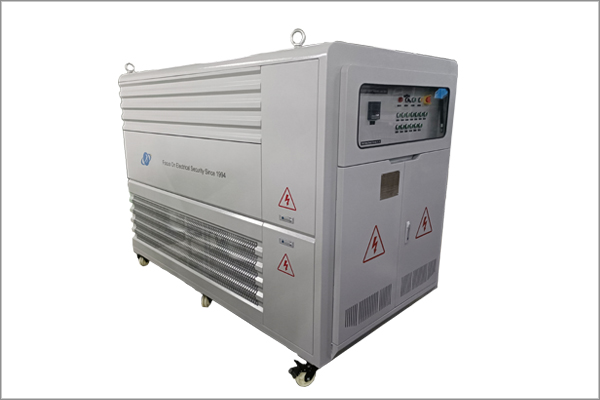This section describes the test environment requirements for power devices
Time:2024-05-21
Power supply equipment, as the heart of electronic equipment and systems, its stability and reliability are crucial to the operation of the entire system. In order to ensure that the power supply equipment can work stably in a variety of environments, we need to carry out a series of rigorous tests on the power supply equipment. In this paper, the testing environment requirements of power equipment will be discussed in detail.
First, temperature environment requirements
During the working process of the power supply equipment, the change of temperature will directly affect its performance and life. Therefore, when detecting the power supply device, it is necessary to simulate the working environment at different temperatures to ensure that it can work normally under various temperature conditions. In general, power supply devices need to be tested under the following temperature conditions:
Low temperature working test: The power adapter in the working state, after (-10±3)℃ low temperature test for 2 hours, the electrical performance should meet the relevant requirements. This is to test the ability of the power supply equipment to work at low temperatures.
High temperature storage test: After the power adapter is stored at (70±3)℃ for 16 hours, it is recovered under normal atmospheric conditions, the mechanical structure should not be damaged, and the electrical performance should meet the relevant requirements. This is to simulate the performance of the power supply device in a high-temperature storage environment.
High temperature working test: high temperature working power adapter in the working state, after (40±3)℃ high temperature test for 2 hours, the electrical performance should meet the relevant requirements. This is to test the stability and reliability of the power supply equipment under high temperature operating environment.
Second, humidity environmental requirements
Humidity is also one of the important factors affecting the performance of power equipment. In a humid environment, the internal components of the power device are prone to moisture, rust or short circuit, which affects the normal operation of the power device. Therefore, when testing the power supply equipment, it is necessary to carry out wet and heat tests. After 48 hours of testing at (40±2)℃ and the upper limit of relative humidity (93+2)% / lower limit of relative humidity (93-3)%, the mechanical structure should not be damaged, and the electrical performance should meet the relevant requirements.
3. Vibration and shock environment requirements
Power equipment may be affected by various vibrations and shocks during transportation and use. In order to test the vibration resistance and impact resistance of the power supply equipment in the vibration and impact environment, it is necessary to carry out vibration and impact tests. Vibration test usually adopts sweep frequency vibration with a frequency of 10Hz~55Hz and displacement amplitude of 0.35mm to check whether the mechanical structure of the power supply equipment is loose or damaged. The impact test adopts 18 half-sine pulse shocks with peak acceleration of 300m/s² and pulse duration of 11ms to test the stability and reliability of the power equipment in the impact environment.
Four, electrical safety environmental requirements
The electrical safety performance of power supply equipment is one of the important indexes to evaluate its quality. When detecting a power supply device, pay attention to its electrical safety performance, including leakage current, insulation resistance, and voltage resistance. The leakage current test is to measure whether the leakage current is less than 5 mA by an indirect resistance of 1.5K ohms between the exposed uncharged metal part of the power supply equipment and the ground. The insulation resistance test is to check the quality of the insulation material inside the power supply equipment to ensure that it has good insulation performance. Voltage test is to apply a certain high voltage to the power supply equipment to test whether it can withstand more than 1.5 times the rated voltage without breakdown or damage.
In summary, the testing environment requirements of power equipment include temperature, humidity, vibration and shock, and electrical safety. Only strict testing in these environments can ensure that the power supply equipment can work stably in a variety of complex environments, and provide reliable power protection for electronic equipment and systems.
News Recommendation
-
 2024-09-11
2024-09-11TRIUMPH LOAD EXHIBITING AT Enlit Europe 2024 -BOOTH 7.H08
-
 2023-04-21
2023-04-21TRIUMPH LOAD EXHIBITING AT DATA CENTER WORLD GERMANY 2023-BOOTH F909
-
 2023-04-06
2023-04-06TRIUMPH LOAD EXHIBITING AT ELECTRIC POWER TECH KOREA 2023 – Booth G109
-
 2022-05-05
2022-05-05What is the role of ac load bank for power supply?
-
 2022-05-05
2022-05-05What is the role of the load bank?


